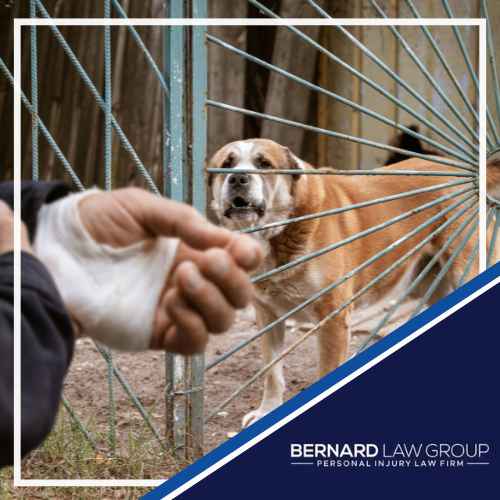Ensuring your child’s safety while on the road is essential, and understanding the car seat laws in Seattle is necessary to protect your little ones.
As your trusted car accident lawyer in Seattle, the Bernard Law Group is committed to providing valuable information that can help you navigate these regulations effectively. In Washington State, compliance with child car seat laws can significantly reduce the risk of injuries in the unfortunate event of an accident.
Our Seattle injury attorney team is here to guide you through the essential aspects of these laws to ensure your child’s safety during every journey.
Importance of Car Seat Safety
Car seat safety is an indispensable aspect of child protection when traveling by vehicle. Car accidents remain one of the leading causes of injury and death for children under thirteen years old.
Using the appropriate car seat can dramatically decrease the likelihood of these tragic outcomes.
According to the National Highway Traffic Safety Administration (NHTSA), car seats can reduce the risk of fatal injury by 71% for infants and by 54% for toddlers in passenger cars. As a responsible parent and driver, adhering to car seat regulations is crucial in safeguarding your child’s life.
Age-Appropriate Car Seats
In Washington State, car seat laws are structured to provide the best possible protection for children at different stages of growth. Infants and toddlers should ride in rear-facing car seats until they are at least two years old or until they reach the highest weight or height allowed by the car seat’s manufacturer.
Once children outgrow rear-facing seats, they should transition to forward-facing car seats equipped with a harness. After surpassing the limits for forward-facing seats, booster seats are recommended until the child is large enough to properly use the vehicle’s seat belt. Following these guidelines is essential to ensure optimal protection for your child.
Correct Installation and Usage
Proper installation and usage of car seats are as critical as choosing the right seat for your child’s age and size. Incorrectly installed car seats can fail during an accident, putting children at greater risk for injury.
Car accident lawyers in Seattle often encounter cases where improper car seat usage leads to preventable injuries. Parents should read the car seat manufacturer’s instructions and the vehicle owner’s manual to avoid this.
Many local fire stations and police departments offer car seat inspection services to ensure correct installation. Our Seattle injury attorneys recommend using these community resources for added peace of mind.
Legal Consequences and Safety Benefits
Washington State law mandates car seats and seat belts for children up to 13 years old. Failure to comply with these regulations can result in fines and impact a personal injury claim in the event of an accident.
Beyond legal compliance, the primary benefit of following car seat safety laws is the enhanced protection they afford young passengers. By prioritizing your child’s safety with the correct car seat, you reduce the risk of severe injury or fatality in a crash.
Washington State Car Seat Laws
Parents and guardians prioritize the safety of children during car travel. In Washington State, specific laws mandate the proper use of car seats, booster seats, and seat belts to protect young passengers.
These laws aim to shield children from serious injuries in the event of an accident. Understanding and complying with these regulations is crucial for your child’s safety and well-being.
Here, we provide an overview of car seat requirements and recommendations for different age groups to help you navigate these important safety measures.
Rear-Facing Car Seats
Washington State law requires children under two to be secured in a rear-facing car seat. This ensures they receive the maximum protection during travel, as rear-facing seats better support a child’s head, neck, and spine in a collision.
Parents should follow the car seat manufacturer’s weight and height limits guidelines to determine when their child is ready to transition from a rear-facing seat to a forward-facing one.
Forward-Facing Car Seats
Once a child has outgrown the rear-facing seat, the next step is to use a forward-facing car seat with a harness. Washington State law mandates that children use a forward-facing seat until age four.
Ensuring the harness is correctly fitted and snug is crucial to providing optimal protection during this stage. The chair should be installed correctly in the vehicle’s back seat, ideally in the center position, which statistically offers the most safety.
Booster Seats
Children over four years old who have outgrown their forward-facing car seats should transition to booster seats. According to Washington State law, a booster seat must be used until the child is 4’9″ in height, typically between the ages of eight and twelve.
Booster seats help position the vehicle’s seat belt correctly across the child’s shoulder and lap, reducing the risk of injury in an accident.
Seat Belt Requirements
Washington State law requires children 4’9″ or taller to use the vehicle’s seat belt. However, the seat belt must fit correctly: the lap belt should lie snug across the upper thighs, not the stomach, and the shoulder belt should cross the chest and shoulder, not the neck or face.
Seat belt fit is essential to ensure that in the event of a collision, the belt can effectively restrain the body to minimize injury. Our Seattle injury attorneys often handle cases where improper seat belt usage led to avoidable injuries, underlining the importance of proper restraint.
Legal Compliance and Safety Checks
Washington State takes compliance with car seat laws seriously. Failure to adhere to these regulations can result in fines and, in some cases, may affect personal injury claims.
As your car accident lawyer in Seattle, Bernard Law Group advises all parents to regularly check their car seats for recalls and to have them inspected by a certified technician to guarantee they are installed correctly.
Ensuring the safety of young passengers is not just a legal obligation but a moral one. By following these car seat laws, you can significantly enhance your child’s safety when traveling.
How to Properly Install a Car Seat
Correctly installing a car seat is essential to ensure the safety of young passengers. Misuse or improper installation of car seats can significantly reduce their effectiveness during a crash, so it is crucial to follow guidelines and recommendations carefully. I
Here, you will find a step-by-step guide on properly installing various types of car seats, from rear-facing to booster seats. By adhering to these instructions and taking advantage of local inspection services, parents and guardians can ensure their children are securely fastened and protected while traveling.
Choosing the Right Location
Selecting the optimal location for car seat installation is the first step in ensuring your child’s safety. The back seat is the safest place for children, with the center position being statistically the safest spot in the vehicle.
This location minimizes the risk of injury from side-impact collisions. It is crucial to refer to both your vehicle’s owner manual and the car seat manufacturer’s guidelines to ensure compatibility and proper installation in your specific vehicle.
Rear-Facing Car Seat Installation
To install a rear-facing car seat, start by securing the car seat base or the seat itself using either the LATCH system (Lower Anchors and Tethers for Children) or the vehicle’s seat belt. Ensure the car seat is positioned at the correct recline angle to keep the child’s airway open and prevent slumping.
Most car seats have built-in angle indicators or adjusters to assist with this. Once installed, the seat should be securely fastened with minimal side-to-side or front-to-back movement. Always double-check that the straps are correctly threaded through the appropriate belt paths specified in the car seat manual.
Forward-Facing Car Seat Installation
When transitioning to a forward-facing car seat, it is essential to secure the seat using the LATCH system or the vehicle’s seat belt. Forward-facing seats should also utilize the top tether, which helps reduce forward head movement in a crash.
Attach the tether strap to the designated anchor point in your vehicle, often located on the back of the seat or in the cargo area, and tighten it securely. Ensure that the harness straps are at or above the child’s shoulders and that the chest clip is positioned at armpit level to properly align the straps.
Installing a Booster Seat
Booster seats correctly position the vehicle’s seat belt across the child’s body. Unlike car seats with a harness, booster seats rely on the vehicle’s seat belt to secure the child. Ensure the lap belt lies snug across the child’s upper thighs, not the stomach, while the shoulder belt should cross the chest and shoulder without touching the neck or face.
High-back boosters provide additional head and neck support and are recommended if your vehicle lacks adjustable headrests. Confirm that the booster seat is stable on the vehicle seat and that the child remains seated properly.
Double-Check Your Work
After installing the car seat, it is crucial to double-check the installation to ensure it is secure and correctly positioned. Employ the inch test: tug at the car seat to ensure it doesn’t move more than an inch side-to-side or front-to-back.
Check that the harness is snug and the chest clip is correct. Additionally, many local fire stations, police departments, and certified child passenger safety technicians offer car seat inspection services. Utilizing these resources can ensure that your car seat is installed properly.
Regular Maintenance and Compliance
Regularly inspect your car seat for wear and tear, and ensure all parts function correctly. Car seats have expiration dates, typically six to ten years from the manufacture date, due to the potential degradation of materials over time.
Always stay informed about recalls and safety notices regarding your car seat model. Keeping abreast of these updates can prevent the use of faulty equipment and ensure your child’s safety remains uncompromised.
Proper car seat installation is paramount in providing maximum protection for your child during travel. By adhering to installation guidelines and regularly checking the car seat’s condition, parents can mitigate risks and ensure their child’s safety in the event of an accident.
Transitioning Between Car Seats
Determining when to transition between car seats is crucial for maintaining your child’s safety. Start by closely following the car seat manufacturer’s weight and height limits.
Rear-facing car seats should be used for as long as possible until your child reaches the maximum size allowed. This position offers the most protection for the head, neck, and spine in a crash.
Once your child exceeds these limits, it is time to transition to a forward-facing car seat. Adhering to the guidelines provided in the car seat manual is essential to ensuring your child remains secure and comfortable during travel.
Signs Your Child is Ready for a Booster Seat
The transition from a forward-facing car seat to a booster seat should only occur when your child outgrows the harness seat’s weight or height limits. Typically, this is when they are over 65 pounds or have grown taller than the seat specifications.
A booster seat positions the vehicle’s seat belt properly on a child’s body, enhancing safety. Ensure your child can sit with their back against the vehicle seat, knees bending at the edge of the seat, and remain in this position for the entire trip.
The shoulder belt should fit snugly across the chest and shoulder, and the lap belt should lie low on the hips, touching the upper thighs.
Moving to Seat Belts Alone
Your child is ready to transition from a booster seat to using the vehicle’s seat belt alone when they can sit back against the seat with their knees comfortably bent over the edge. They should be able to sit properly for the entire trip without slouching.
The vehicle’s seat belt should lie across the upper thighs and snugly across the shoulder and chest, avoiding the neck or face. Typically, this transition occurs when they are around 4 feet 9 inches in height and between 8 to 12 years of age. Always refer to the specific guidelines provided by safety experts and vehicle manufacturers.
Ensuring a Safe Transition
Every transition between car seats should be approached with careful consideration. Double-check that the new seat is installed correctly and that your child fits securely within the specified size limits for their seat.
Review the manufacturer’s installation instructions and vehicle manual to ensure compatibility and proper installation. Attend a car seat inspection clinic where a certified technician can verify that the new seat is correctly installed and suitable for your child’s size and weight.
Common Mistakes to Avoid
Avoid transitioning to the next car seat stage too early; each seat type is designed to provide specific protections appropriate for a child’s size and physical development. Do not misuse or forego the top tether when moving to a forward-facing seat, and never place the shoulder belt under the child’s arm or behind their back when using a booster seat.
Additionally, never use a seat that has exceeded its expiration date or has been involved in a crash.
Prevent Injuries with Proper Car Seat Use
Navigating the intricacies of car seat safety is a critical responsibility that can significantly impact your child’s well-being during travel. Adhering to expert guidelines ensures optimal protection, from the fundamental steps of proper installation and regular maintenance to understanding the right moments to transition between different seat types.
Each stage, from rear-facing to booster seats, accommodates your child’s growth while providing essential safety benefits. Never underestimate the value of professional resources such as inspection services, which can offer peace of mind and expert verification.
By staying informed and proactive, you can uphold the highest standards of safety for your child. The Bernard Law Group remains dedicated to assisting families in safeguarding their journeys, providing expert support and guidance at every step.
Contact our Seattle injury attorneys if you are involved in an accident and need assistance. We will help you seek justice and compensation.




